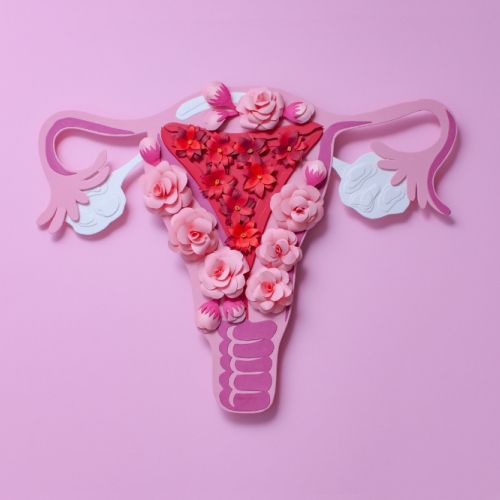ART Outcomes: Morbidity and Mortality

When most couples think about starting a family, they generally don’t anticipate needing medical assistance to become pregnant. But infertility is a relatively common problem that affects an estimated one in six couples.
Luckily, assisted reproductive technology (ART) offers a variety of solutions designed to help couples overcome many of the most common obstacles to fertility.
In the United States, ART techniques have helped bring more than one million babies into the world since 1987. And every year, more than 61,000 babies — or almost 2% of all SS births — are born via in vitro fertilization (IVF).
All fertility treatments come with a certain amount of risk though. So if you’re considering using any type of ART to help you get pregnant, it’s important to understand what those risks are and how they may affect your pregnancy.
Here’s what you should know about the perinatal morbidity and mortality risks that are associated with current assisted reproductive technologies.
Measuring ART outcomes
Every year, the Centers for Disease Control and Prevention collects data from all US fertility clinics to determine average ART outcomes as well as the maternal and perinatal risks that are associated with those outcomes. This information helps couples considering fertility treatment estimate their own chances of success and what their risks may be.
The Society for Assisted Reproductive Technology (SART) compiles this data in an annual report that provides statistics about ART pregnancy success rates, maternal risks, and perinatal outcomes, including birth weight, multiple babies, and sick or stillborn babies.
Interpreting ART success rates
ART outcomes are measured in a variety of different ways to give you the best possible idea of your chances of success based on your age, specific fertility problem, and chosen ART fertility treatment.
If you and your partner are planning to use IVF with an embryo transfer, for example, you’d want to consider the current statistical success rates of that specific procedure. Similarly, if you’re planning to use intracytoplasmic sperm injection (ICSI), you’d want to pay attention to the ART outcomes and success rates associated with that particular procedure.
In 2016, the most recent reporting year, ART outcome statistics reveal that the cumulative live birth rate per egg retrieval was approximately 50% at the national level. Here at California Center for Reproductive Health, patients experienced a considerably higher (almost 67%) cumulative live birth rate per egg retrieval.
Understanding specific ART risks
Although the vast majority of babies conceived via IVF and other ART techniques are just as healthy as babies who are conceived naturally, fertility treatments are associated with certain fetal risks, including an increased risk of morbidity (illness or disease) as well as an increased risk of mortality, or stillbirth.
ART-related perinatal risks include:
Multiple gestations
Multiple gestation, or becoming pregnant with more than one baby, has long been the most notable risk that ART poses to fetal health. That’s because carrying multiples is consistently associated with an increased risk of detrimental outcomes, including preterm birth and related complications.
To help prevent the significant risks associated with multiple gestations, we strongly encourage our patients to opt for single-embryo transfer whenever possible.
Preterm birth and low birthweight (LBW)
Even in cases of singleton conception, babies conceived via ART are at an increased risk of premature birth (being born before 37 weeks gestation) as well as LBW.
Premature babies and babies born with LBW may have a harder time eating and gaining weight, may not be able to fight off infection as well, and may have an increased risk of developing heart disease, diabetes, and other chronic health conditions later in life.
While several large studies have suggested that most ART techniques increase these risks by twofold, pregnancies conceived via frozen-embryo transfers are actually associated with a reduced risk of preterm birth and LBW compared to those conceived via fresh-embryo transfer.
Congenital abnormalities
Babies conceived via ART appear to have a slightly increased risk of being born with a birth defect or congenital malformation when compared to babies that are conceived naturally.
Considering the fact that congenital abnormalities affect about 4-5% of babies who are conceived naturally, compared to about 6-7% of babies who are conceived medically, the absolute risk of conceiving a child with a congenital abnormality via ART is still relatively low.
Perinatal mortality
While a wide body of research shows that the risk of stillbirth and infant mortality is slightly greater for pregnancies conceived via ART, this outcome is most likely related to other ART-related risks, including severe maternal morbidity, preterm birth, and LBW.
If you’d like to learn more about ART success rates, outcomes, and risk factors, we can help. Call us or schedule an appointment online at one of our conveniently located clinics in Encino, West Hollywood, Monica, or Valencia, California.
Eliran Mor, MD
Reproductive Endocrinologist located in Encino, Valencia & West Hollywood, CA
FAQ
What does a reproductive endocrinologist and infertility specialist do?
Reproductive endocrinology and Infertility is a sub-specialty of Obstetrics and Gynecology. In addition to managing medical and surgical treatment of disorders of the female reproductive tract, reproductive endocrinologist and infertility (REI) specialists undergo additional years of training to provide fertility treatments using assisted reproductive technology (ART) such as in vitro fertilization.
Reproductive endocrinologists receive board certification by the American Board of Obstetrics and Gynecology in both Obstetrics and Gynecology and Reproductive Endocrinology and Infertility.
When should I see an REI specialist?
In general, patients should consider consulting with an REI specialist after one year of trying unsuccessfully to achieve pregnancy. The chance of conceiving every month is around 20%, therefore after a full year of trying approximately 15% of couples will still not have achieved a pregnancy.
However, if a woman is over the age of 35 it would be reasonable to see a fertility specialist earlier, typically after 6 months of trying.
Other candidates to seek earlier treatment are women who have irregular menses, endometriosis, fibroids, polycystic ovary syndrome (PCOS), women who have had 2 or more miscarriages, or problems with the fallopian tubes (prior ectopic pregnancy).
What are the reasons we are having trouble conceiving?
Approximately 1/3 of the time cause for infertility is a female factor, 1/3 of the time a male factor, and the remaining 1/3 a couples’ factor.
At CCRH, we emphasize the importance of establishing a correct diagnosis. Both partners undergo a comprehensive evaluation including a medical history and physical exam.
Furthremore, the woman’s ovarian reserve is assessed with a pelvic ultrasound and a hormonal profile. A hysterosalpingogram (HSG) will confirm fallopian tube patency and the uterine cavity is free of intracavitary lesions. A semen analysis is also obtained to evaluate for concentration, motility, and morphology of the sperm.
Additional work up is then individualized to direct the best possible treatment option for each couple.
What is IVF? What is the process like?
In vitro fertilization (IVF) is the process that involves fertilization of an egg outside of a woman’s body.
The process starts with fertility drugs prescribed to help stimulate egg development. In your natural cycle, your body is only able to grow one dominant egg, but with stimulation medication we can recruit multiple eggs to continue to grow. After about 8-10 days of stimulation, the eggs are surgically retrieved and then fertilized with sperm in a specialized laboratory. Fertilized eggs are then cultured under a strictly controlled environment within specialized incubators in the IVF laboratory for 3-5 days while they develop as embryos. Finally, embryos (or an embryo) are transferred into the uterine cavity for implantation.
Should I have IVF?
Before deciding if IVF is the right choice, it’s important to sit down with an REI specialist to discuss available treatment options. For some people, other methods such as fertility drugs, intrauterine insemination (IUI) may be the best first choice treatment. At CCRH, we believe each individual couple is unique and not everyone needs IVF.
Is the IVF procedure painful?
While not painful, the fertility medications may some side effects including headaches, hot flashes, mood swings, and bloating. The injection sites may also bruise.
Will IVF guarantee a baby?
Unfortunately, no. Many people think once they start IVF it’s a matter of time that they will be pregnant and have a baby. But according to national statistics per the Society of Assisted Reproduction (SART), on average 40% of assisted reproduction cycles achieve live births in women under age 35. The chances of success then continue to decrease with advancing age.
At CCRH, we employ only evidence-based interventions to ensure patient safety and optimal outcome. While we cannot guarantee a baby, we guarantee that you will receive the best, most advanced, personalized care to help you maximize your chance of a baby.
What is the success rate for IVF?
The average IVF success rate (success measured in live birth rate) using one’s own eggs begins to drop around age 35 and then rapidly after age 40. This is due to the decline in egg quantity and egg quality as a woman ages.
Our clinic’s success rate consistently beats the national average year after year.
Do insurance plans cover infertility treatment? How much does IVF cost?
Individual insurance plans often do not have any coverage for infertility treatments. If you have a group plan, you can call members services to see if they have coverage for infertility (including consultation/workup and IVF).
After your consultation with our REI specialist, one of our dedicated account managers with sit with you to go over the cost of treatment.




